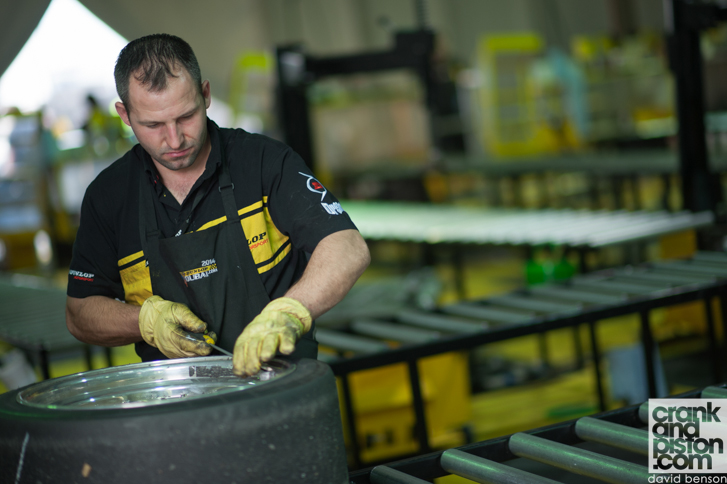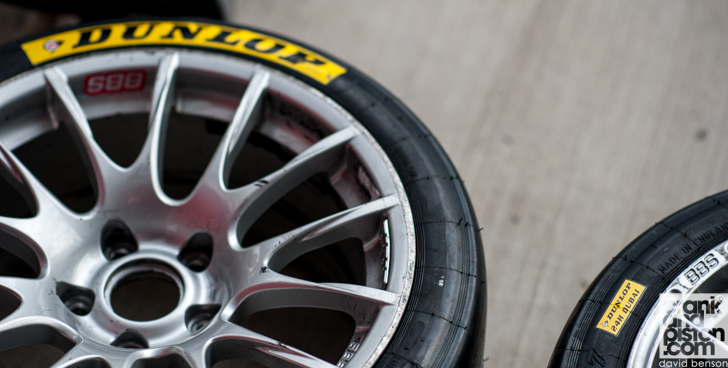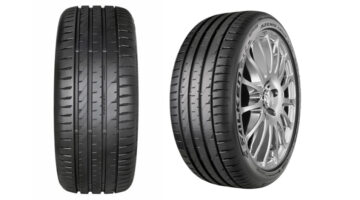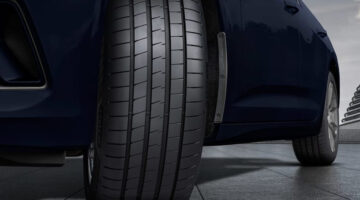The entire 2014 Dubai 24 Hours will require nearly 8000 tyres during the weekend. And that’s just one of the fun facts Dunlop tells crankandpiston…
[Not a valid template]“To cover 81 cars, we’ve brought more than 7500 tyres here in 15 containers. If we brought any more variants, we’d end up with 9-10,000 tyres, and that’s just not practical.”
Picture the scene. Ahead of you is the 2014 Dubai 24 Hours, during which each car will pit between 18 and 19 times, for both fuel and tyres. Each pit stop requires four tyres, meaning each car – not team, car – needs at least 72 tyres apiece, and that’s before you start thinking about punctures. And you are the person responsible for supplying each team with the rubber they need to complete race distance.
Intimidating, isn’t it? It’s a situation though which Gary Wassell, Dunlop’s Manager Car Motorsport for Europe, is all too familiar with, having been a part of the industry for more than 30 years. During the 2014 Dubai 24 Hours, it is his responsibility to make sure the 7500-plus tyres currently under lock and latch in the Dubai Autodrome paddock make it to their assigned pit garages, and I’m curious to know how an operation of this magnitude is run.

“The process starts in June when the race entries come in”, Gary explains. “Our agreement with Creventic – the organisers – is that there’s a cut-off point at the end of October, which gives us a six-month window to make the tyres. Fortunately as most of the cars are GT cars, the sizes are very similar, so there’s not a huge range of tyres. Some of the cars are a little heavier on the front, like the Aston Martin, so we tend to go a little harder compound-wise. The Porsches tend to go a little softer since they’re rear-engined but generally the grid shares the same compound [or tread]. When the tyres are ready, we normally ship them around mid-November.”
And that’s just the beginning. One week prior to the race itself, 41 Dunlop crew members – including Gary – hit the Dubai Autodrome, the containers having already arrived at Christmas. Eight of the team arrive on the Friday to begin setup, the rest filing in and rolling their sleeves up four days before qualifying stars.
“By the time the first group of fitters arrives on Monday, we’re ready to go,” Gary explains. “Half the fitting staff arrive on Monday evening ready for Tuesday morning fit up, and we start fitting around Tuesday lunchtime. Most of these teams have 8-10 sets of rims, which means we can fit the tyres on Wednesday or Thursday. They then have plenty of rubber to prepare for the race.

At this point, I have to ask Gary to move a little closer to the microphone, the sound of 40-plus yellow-shirts working furiously away on the impressive production line behind us having got louder. As you’d expect, the Dunlop operation during the event itself is enormous.
“We’ve all got our allocated slots. The teams come and see the admin guy to tell him what they want. He then raises a docket and goes to a stock guy who gets the tyres out. We have about four or five guys taking the balance weights off, and then we’ve got five fitters, five inflation cages, and five balancing the tyres.
“Whatever the teams order, we can supply it. If they need more tyres than anticipated, they’ll have whatever they need. If they need less, we don’t force them. Then there’s the practicalities of fitting them. My team is highly skilled and have fitted thousands and thousands of tyres. They know what has to be done, and that means the event can run a lot smoother.”



